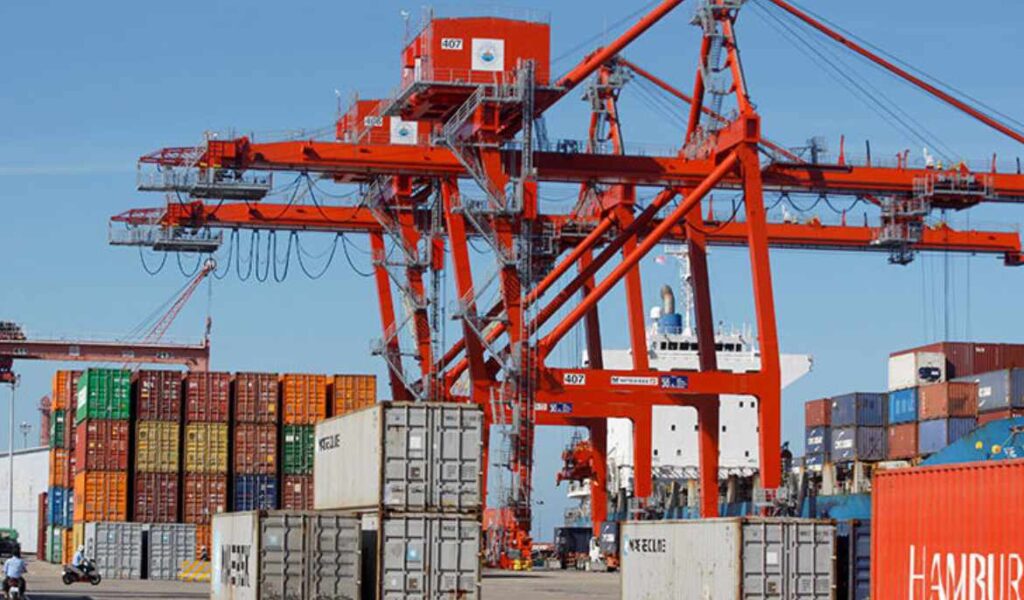With Cambodia’s solid growth momentum, aided by export-oriented services as well as sustained domestic consumption and a growing trend of supporting and using locally made products, the country’s economy is expected to grow by around 5.2 percent this year, said Deputy Prime Minister and Minister of Economy and Finance (MEF), Aun Pornmoniroth, yesterday.
Addressing a workshop on understanding the development of the macroeconomic and public financial policy framework for the preparation of the draft Law on Financial Management for 2026 at the National Assembly (NA) Palace, Pornmoniroth shed light on the economic situation during the first nine months of 2025.
Pornmoniroth noted that the global, regional, and domestic economic outlooks, including Cambodia, are facing more risks than opportunities, requiring regular and consistent monitoring of socio-economic developments. This, he said, is necessary to assess their implications for the domestic macroeconomic situation and to adjust policy directions, while preparing timely and effective response measures when needed.
“Based on developments in the first nine months of 2025, the Ministry of Economy and Finance’s working group has reassessed the economic situation, and overall, Cambodia’s economy in 2025 is expected to achieve growth of around 5.2 percent, consistent with the projection in the Medium-Term Fiscal Framework (MTFF) in April 2025,” he said.
However, Pornmoniroth added that growth performance varies across sectors and sub-sectors. Some sectors are expected to achieve higher-than-anticipated growth, while others may meet or fall below expectations due to the impact of US tariffs and the continued closure of the Cambodia-Thailand land border.
“I would like to emphasise that the overall and sectoral growth estimates are broadly consistent with the assessments of major international financial institutions, although the magnitude of the figures differs slightly depending on expert judgment and justifications of each institution’s key assumptions,” he added.

In particular, the International Monetary Fund (IMF) and the World Bank project Cambodia’s economic growth in 2025 at around 4.8 percent, while the Asian Development Bank (ADB) and the ASEAN+3 Macroeconomic Research Office (AMRO) forecast growth of approximately 4.9 percent.
The Deputy Prime Minister added that in 2026, Cambodia’s economy is projected to grow by around 5 percent — the same rate expected in the MTFF, but some adjustments have been made to the growth rates of individual sectors and sub-sectors.
In fact, the projected 5 percent growth rate for 2026 represents a slight slowdown compared to 2025, reflecting the continued impact of countervailing duties on the export-oriented service sector, along with the anticipated effects of the prolonged closure of the Cambodia–Thailand land border. The economic situation, he noted, is unlikely to return to pre-closure normality immediately.
“However, overall, Cambodia continues to maintain solid growth momentum, supported by export-oriented services, as well as sustained domestic consumption and a growing trend of supporting and using locally made products,” Pornmoniroth said.
In principle, the final results for 2025 and a reassessment of the 2026 growth outlook will be conducted in early 2026 to prepare the next Medium-Term Fiscal Framework (MTFF), he added.
Seun Sam, a policy analyst at the Royal Academy of Cambodia (RAC), told Khmer Times that he would be pleased if Cambodia’s economic growth meets the MEF’s latest projection.
He noted that in recent years, the global economy has been gradually recovering from the impacts of the Covid-19 crisis.
“Cambodia is also among the countries affected by the global economic downturn caused by Covid-19 and, subsequently, by the Russia-Ukraine and Israel-Palestine conflicts — all of which have influenced the global economy,” Sam said. “Recently, Thailand’s invasion of Cambodia has also had a partial impact on the Cambodian economy.”
However, he added that Cambodia maintains friendly relations with countries around the world, enabling it to import goods from other sources to replace Thai products.
“The projection that Cambodia’s economy could grow by 5.2 percent is possible,” Sam emphasised. “We have many development partners supporting us. However, I urge the government to continue studying how to attract more foreign investors, because having good policies alone is not enough.”
He stressed the importance of establishing a strong monitoring mechanism to identify challenges that could hinder economic progress.
“Both domestic and foreign investors often face obstacles such as technical issues, documentation delays, limited production capacity, or price competitiveness,” he explained. “These remain barriers to achieving the smooth economic growth we aim for.”
It may be recalled that the World Bank’s East Asia and Pacific Economic Update released last month stated that Cambodia’s economy is projected to grow by 4.8 percent in 2025 before moderating to 4.3 percent in 2026, reflecting resilient domestic activity but mounting external pressures.
Economist Darin Duch told Khmer Times recently that Cambodia’s economy remains robust in the face of global headwinds. The World Bank expects the economy to continue growing in the next years, based on plan sound economic management by the government, export diversification and commitment for reform.
“Cambodia’s economy remains robust in the face of global headwinds. The World Bank expects the economy to continue growing in the next few years, based on sound economic management by the government, export diversification, and commitment to reform,” he noted.
He added that the policy priority for Cambodia is clear — to protect existing jobs while laying the foundation for a more competitive and diversified economy. While some short-term measures are in place to maintain stability, the government is focusing on deeper structural reforms over the longer term.



